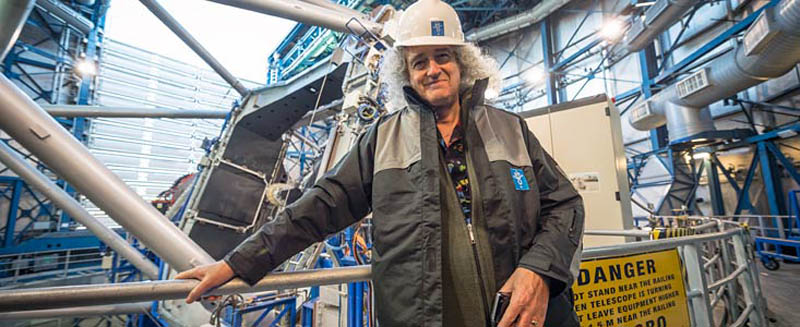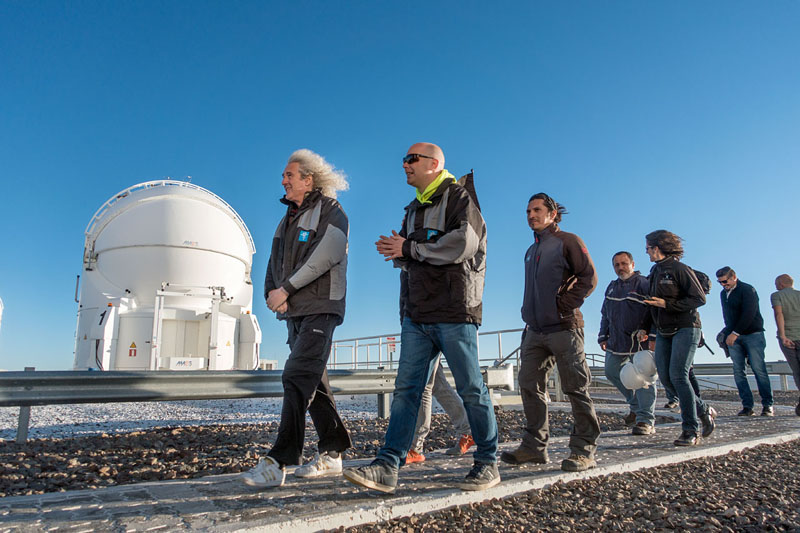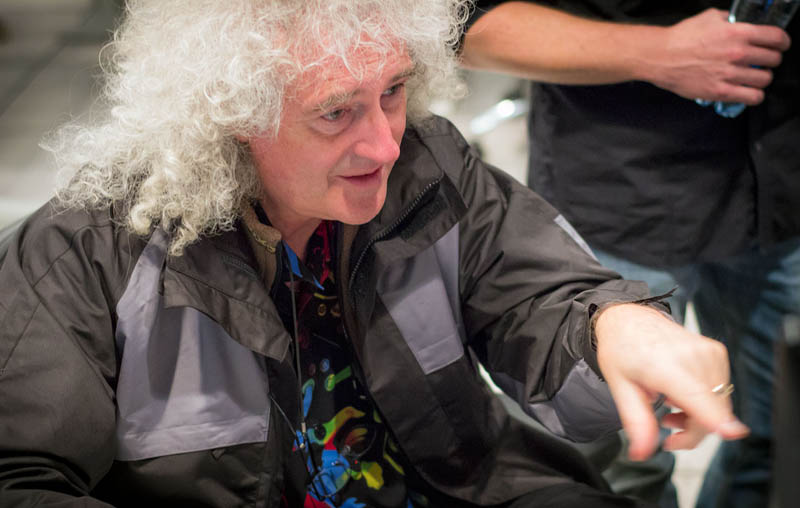
On 28 and 29 September 2015, ESO’s Paranal Observatory welcomed a very special visitor — British rock guitarist, singer, songwriter and astrophysicist, Brian May.
Unbeknownst to many, Brian May — famed for being the lead guitarist of the legendary rock band Queen — has a passion for astronomy. In addition to holding a PhD in astrophysics, the guitarist is a science team collaborator for NASA’s New Horizons mission, which flew past Pluto in July 2015.
ESO therefore decided to invite Brian May to come to Paranal while he was in Santiago, Chile, as part of his current South American Queen tour with Queen drummer Roger Taylor and American singer Adam Lambert.
ESO’s Paranal Observatory is located 130 kilometres south of Antofagasta, in the arid Chilean Atacama Desert. It is home to the four 8.2-metre Unit Telescopes and four 1.8-metre Auxiliary Telescopes of ESO’s Very Large Telescope. Paranal is one of the best sites for observational astronomy in the world.
Touring the facilities, May visited the telescopes at the summit of Cerro Paranal and spent the night at Paranal’s award-winning Residencia, which houses the staff working on site at the observatory.
The guitarist was welcomed in the observatory control room by the observing teams as an honorary visiting astronomer; and Monday evening’s activities included securing images of the asteroid named after him, the planet Pluto, and the celebrated Pillars of Creation [1].
May studied for his PhD degree at Imperial College London. His doctoral thesis (spanning 30 years!) focused on properties of the zodiacal light, a misty diffuse cone of light scattered by dust in the Solar System that appears in western skies after sunset and in eastern skies before sunrise. On a dark and clear night, Paranal is one of the best places on Earth to see this elusive feature of the sky, and, indeed, in a small window between sunset and moonrise last night, the evening Zodiacal Cone was seen and photographed by the team at Paranal.
[1] These observations did not affect the normal science operations of the telescopes. They were made at a time when poor seeing and full Moon meant that no other observations could be scheduled.


